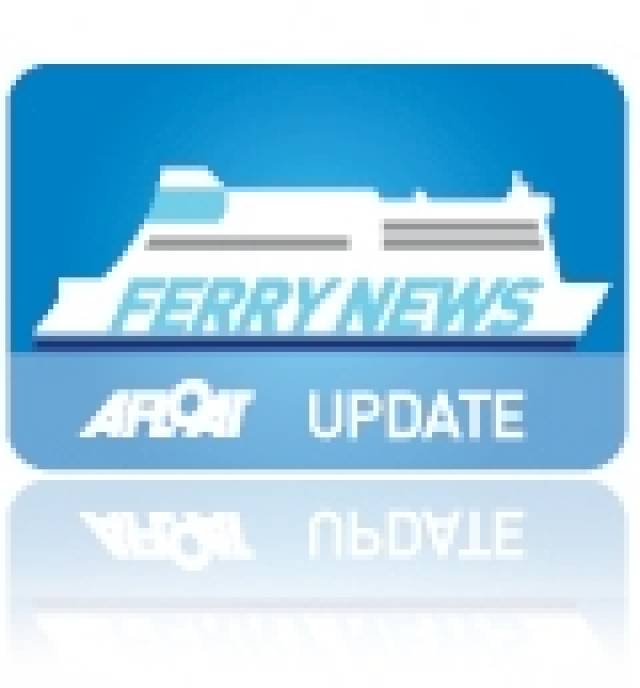#FrenchBoost- Cruiseferry, Oscar Wilde opened the 2014 season of Irish Ferries established Rosslare-Cherbourg route at the weekend, giving a boost in services, following the launch of the new Dublin Port-Cherbourg route last month, writes Jehan Ashmore.
During this off-peak period, the Oscar Wilde had operated winter relief cover on the Rosslare-Pembroke Dock link. As previously reported on Afloat.ie, she also went to A&P Falmouth, from where she recently returned fresh from annual refit so also to serve high-season Rosslare-Roscoff sailings in May.
With Oscar Wilde off-duty then on the French service, Irish Ferries were still able to maintain services to the continent on the new route between the capital and Cherbourg which is operated year-round by the chartered 500-passenger ro-pax Cartour Epsilon.
The 19-hour route is marketed as an 'economy' style alternative to the broader facilities offered by cruiseferry Oscar Wilde on the 17-hour service to Normandy.
It has not been plain sailing for the newcomer, as Cartour Epsilon, encountered a spate of storms, which on occasions led to sailings delayed by a day. This in turn led to some Dublin-Holyhead sailings cancelled, noting the ferry operates daily sailings to Wales and leaving the weekend to cover continental crossings.
In addition, on the initial sailings including her maiden round-trip voyage, the Cartour Epsilon which is designed primarily to carry freight made a scheduled en-route call to Rosslare Harbour, having loaded trade vehicles in Cherbourg before finally completing her return leg to Dublin Port.
Cartour Epsilon's calls to Rosslare are not new, as previously reported, she carried out Rosslare-Cherbourg sailings earlier this year so that Oscar Wilde as mentioned above could in turn carry out relief cover for Isle of Inishmore on the Wexford-Pembrokeshire service.
In fact, the ro-pax made her first ever Irish port of call debut to Rosslare Harbour during her delivery voyage from Messina, Sicily. Likewise to her French debut, trade-vehicles were transported, making sure she was earning her keep while making that repositioning voyage to Dublin Port.






























































